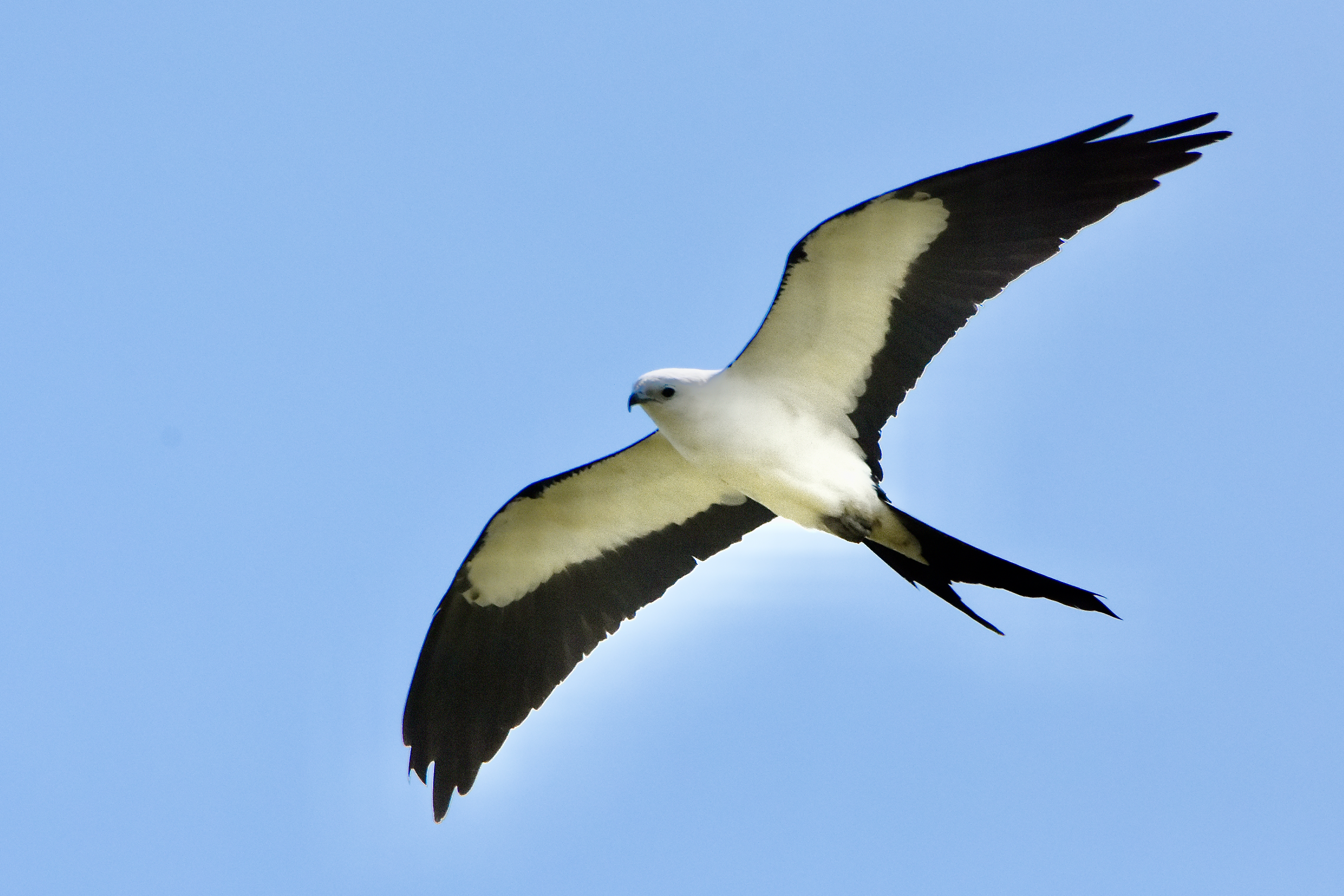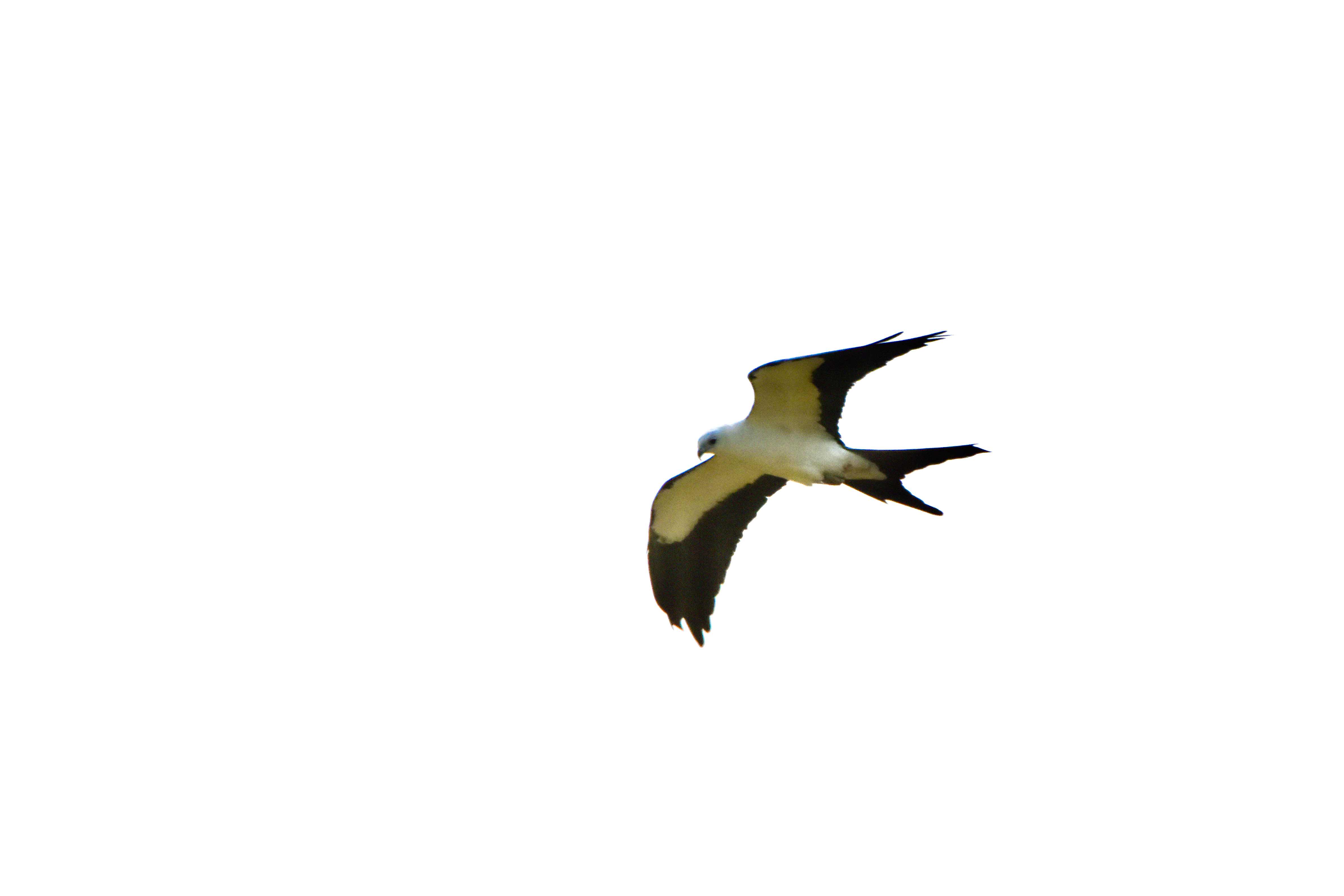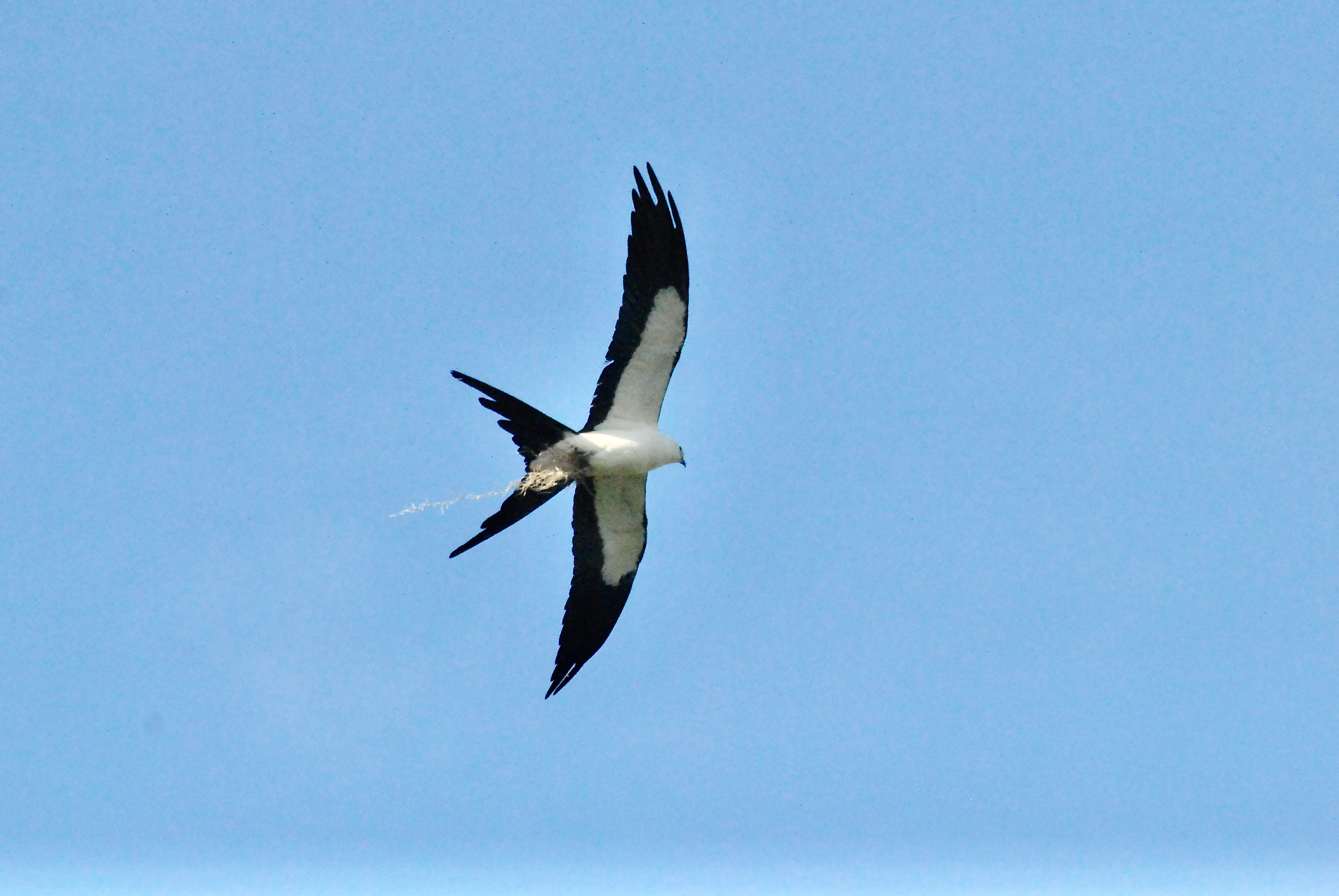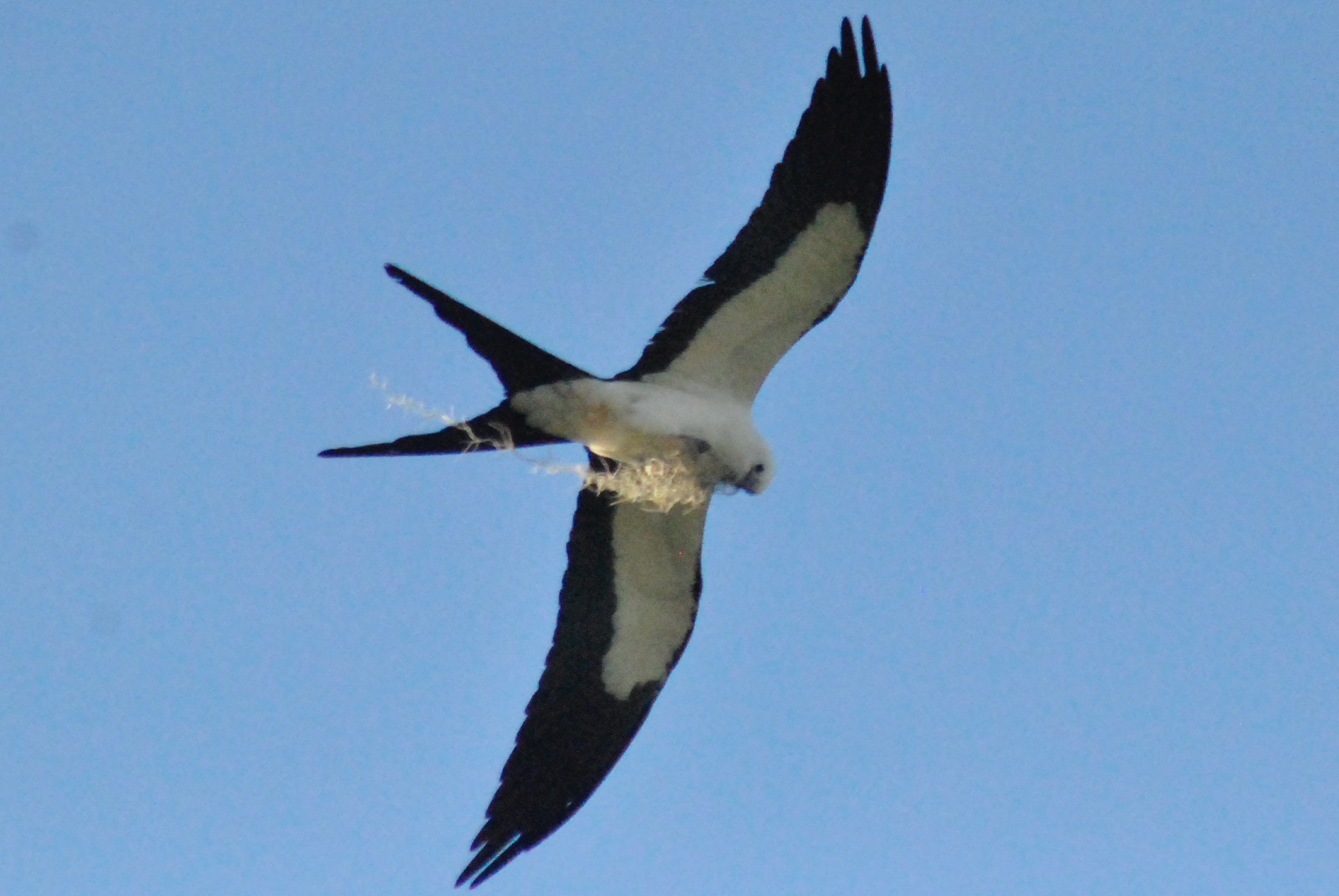
Swllow-tailed kite, photographed at Jonathan Dickinson State Park, Hobe Sound, Martin County, in May 2016.
We've seen eagles. We've seen hawks. We've seen ospreys. Seeing this bird, a swallow-tailed kite, tops them all. Perhaps it was the setting where we first spotted one, the bright blue of the early evening in Everglades National Park. Perhaps it was because he (or she) moved so slowly overhead, almost pausing in mid-air, while showing off his (her) graceful form and flight.
At one time, swallow-tailed kites, Elanoides forficatus, were a common sight throughout the Southeast, and in fact, were known to inhabit 21 states, ranging as far north as Minnesota.
Now, about the only place you expect to see them is Florida, from the central part of the state through the Keys. They're rarely seen in parts of coastal Louisiana, Mississippi, Georgia and South Carolina.
They come here to breed, arriving in March and leaving in August and September. Where they come from and where they go, is something of a mystery. Some say Brazil.
There is a swallow-tailed kite population that lives year-round in South America, including Brazil, Colombia and Venezuela. Swallow-tailed kites are seen in parts of the Caribbean during migration.
They'll nest in small, loose colonies, then gather in large numbers at "staging areas" in South Florida for the return trip south.

Swallow-tailed kites will eat on the fly, picking off insects mid-air or swooping to grab a lizard off a tree top, but they'll also snatch snakes and frogs off the ground. In the photo above, taken at J.W. Corbett Wildlife Management Area, it's a pig frog.
They nest as high as 60 feet in the air atop a pine or cypress in open woodlands. Both sexes build the nest, made of sticks and lined with Spanish moss or lichens. The kite in two of the photos below (center and right) grabbed Spanish moss off a tree as we watched. We took the photos in Everglades National Park, the first swallowed-tail kite we had ever seen.
Females generally lay two eggs per clutch, sometimes more, sometimes only one. Females handle most of the incubation duties while the male brings food. The hatchlings are nest-bound for the first four or five weeks; they will make their first flight after five or six.
They are fairly large birds, going about 19 inches in length and with a wingspan of about four feet. They are striking in the sky, with their white bodies and heads, white on the leading edge of their wings, black on the trailing edge. The deep, V-shaped tail — a key to their incredible flying abilities — is black. The package as a whole makes swallow-tailed kites unmistakable.
According to the Great Florida Birding Trail, one of the best places to see this bird is the Fisheating Creek Wildlife Management Area in Glades County. As many as 2,000 swallow-tailed kites will gather there in late summer before heading south for the winter. Corkscrew Swamp Sanctuary is another gathering spot.
Swallow-tailed kites are members of Accipitridae, the hawks and eagles family.
Jonathan Dickinson State Park



